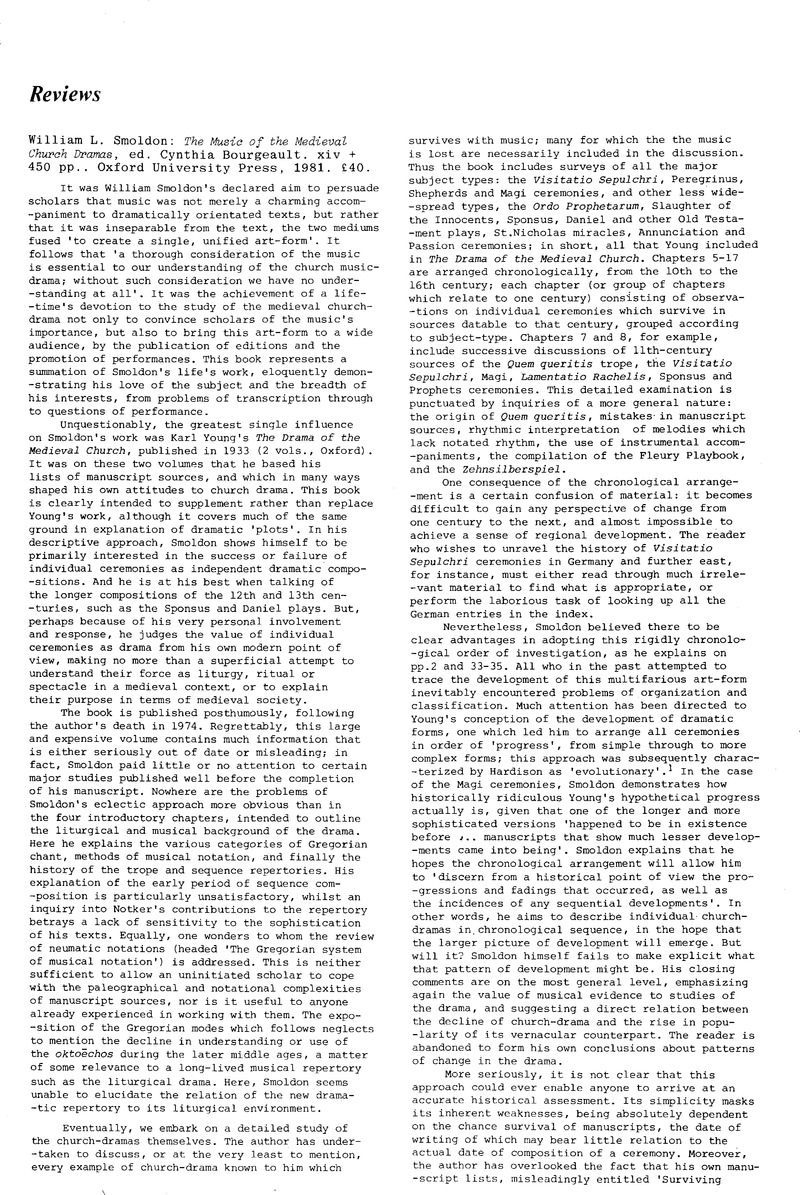No CrossRef data available.
Published online by Cambridge University Press: 14 July 2009

1 Hardison, O.B.: ‘Darwin, Mutations, and the Origin of Medieval Drama’, in Christian Rite and Christian Drama in the Middle Ages (Baltimore, 1965)Google Scholar
2 Leroquais, V.: Les Bréviaires manuscrits des bibliothèques publiques de France (6 vols., Paris, 1934), vol.III, p.78 Google Scholar
3 Husmann, H.: Tropen- und Sequenzenhandschriften, RISM, B/V/l (Munich, 1964), p.160 Google Scholar gives the reasons for the usual assignment to Novalesa (note spelling), which is just inside Italy, west of Turin.
4 Here Smoldon appears to contradict his assertion of p.151 that ‘Arguments based on similarity of musical phrases always seem to me to be insecure’.
5 See especially Sevestre, N.: ‘Les Tropes d'Introït de Noël et de Pâques à l'origine du drame liturgique: Étude du répertoire aquitain des Xe et XIe siècles’, (unpublished doctoral thesis, École Pratique des Hautes Études, IVe section, Paris, 1976)Google Scholar; and Bjork, D.: ‘On the dissemination of Quem queritis and the Visitatio Sepulchri and the chronology of their early sources’. Comparative Drama, 14 (1980), pp.46–69 Google Scholar.
6 In Planchart, A.E.: The Repertory of Tropes at Winchester (2 vols., Princeton, 1977)Google Scholar, the Oxford manuscript is described as anachronistic, having been copied around the middle of the 11th century, but reflecting a prototype from the last quarter of the 10th century. Thus, although its repertory is slightly earlier than that of the Cambridge manuscript, it was actually copied at a later date.
7 Lipphardt, W.: Lateinische Osterfeiern und Osterspiele (6 vols., Berlin, 1975–1981)Google Scholar; and Jonsson, R.: Cycle de Noël, Corpus Troporum I (Stockholm, 1975)Google Scholar.
8 See Lipphardt, vol.II, p.181
9 du Méril, E.: Origines latines du théâtre moderne (Paris, 1849)Google Scholar
10 Meyer, W.: Fragmenta Burana (Berlin, 1901)Google Scholar